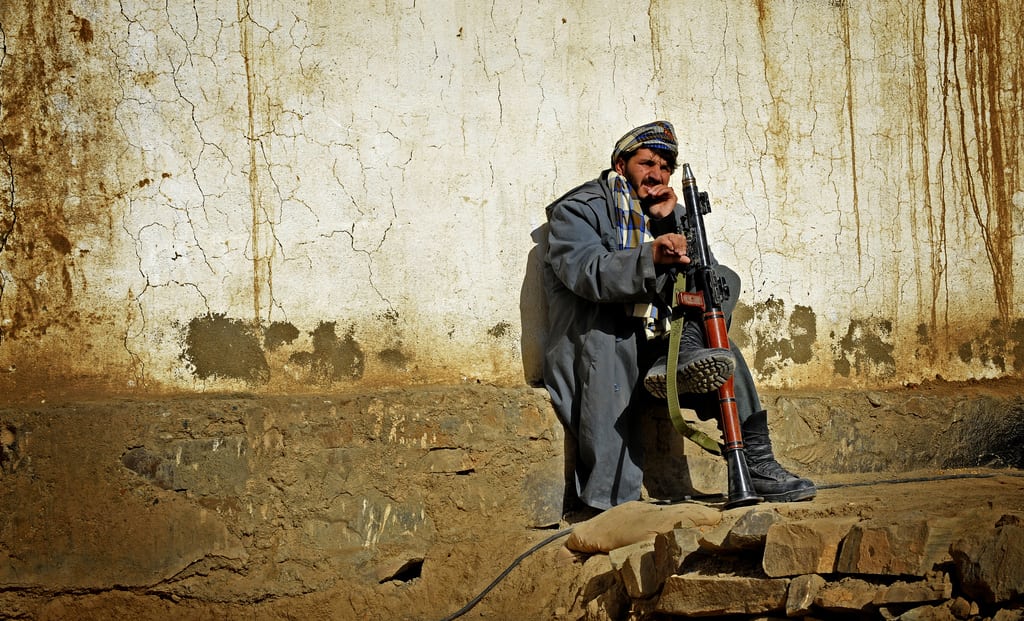 B. Ferguson | https://www.flickr.com/photos/dvids/5246696237/in/photolist-8ZCFZX
B. Ferguson | https://www.flickr.com/photos/dvids/5246696237/in/photolist-8ZCFZX
How the Temporary Afghan Ceasefire is Still Helping the Government in Its Fight Against the Taliban
Earlier this month, Afghan President Ashraf Ghani took the unusual step of announcing a unilateral ceasefire with the Taliban for the last days of Ramadan through the end of Eid-ul-Fitr, the celebratory end to fasting. Though the Afghan National Security and Defense Forces (ANSDF) would defend themselves against Taliban attacks, they would take no offensive measures during this period. Instead, members of the insurgent group would be invited into cities to join in Eid festivals where they would be welcomed as fellow Afghans wishing to participate in one of the holiest times of the year for Muslims. Despite the goodwill Ghani was demonstrating, to some in Afghanistan, the offer seemed like a risk – naïve given the nature of a fighting group that is responsible for countless suicide attacks in Afghan cities. However, Ghani persisted with his offer and less than a week later, the Taliban shocked the Afghan government, and the world, by adopting a ceasefire themselves. And for three days in June, Afghanistan experienced the first pause in Taliban-related hostilities since 2001.
The momentary peace sparked hope in people throughout Afghanistan and in those invested in a peaceful outcome to the conflict there, that peace, or at least peace talks, were not too far away. Unfortunately, like most efforts for resolution of the ongoing fighting in Afghanistan, progress towards peace exists only within the context of near-constant violence. Though the Taliban adhered to non-violence during the ceasefire, ISIL-Khorasan – the Afghanistan-Pakistan branch of the Sunni militant group – struck several times during Eid celebrations, providing a stark reminder that the Taliban is only one of many insurgent groups threatening the Afghan government. One such attack, in Nangahar province, killed twenty-five people, Taliban and Afghan government officials alike. Moreover, despite the Taliban’s commitment to the ceasefire throughout the three agreed-upon days, the end of Eid saw the group refuse to extend the truce, and instead return to arms.
However, despite these instances of violence, and the bleak picture they paint of this June’s ceasefire, the three days without fighting provided President Ghani’s government with two indispensable tools in its fight against the Taliban insurgency. The first is a modicum of regime-legitimacy – something sorely needed by a government that just thinly controls a majority of Afghanistan’s districts. The second is a sample of what peace could look like in Afghanistan, which, in a country that has experienced almost-continuous fighting for four decades, is perhaps the most powerful tool any actor competing for control could wish to have.
Taliban commanders and leaders insist that despite the ceasefire, they are ready to continue the fight until they win; essentially that they cannot be worn down. To this end, they conducted a brutal campaign in the week following Eid, killing around forty ANSDF troops. However, the behavior of Taliban operatives who visited cities and took part in celebrations during the ceasefire belies the narrative that their fight is one they want to fight forever. For low- and mid-level Taliban fighters, many of whom are between sixteen and twenty-five years old, a whole life of war has made the prospect of peace very attractive.
The New York Times noted that during the three-day ceasefire, Taliban fighters enjoyed Eid celebrations just as much as, and right alongside of, people they were shooting at a week before, even drawing ire from their commanders for taking too many selfies. As dedicated as they might be to their ideology, it seemed that many Taliban were tired of fighting.
This sentiment can only benefit President Ghani and the Afghan government. The Taliban, like any other insurgency, is only powerful inasmuch as it can draw popular support for its fight. In Afghanistan, where people are ready for peace after decades of violence, it seems that if the Taliban’s fight continues to involve actual fighting, their popular support will wane as time goes on. As such, it would be wrong to identify the ceasefire as indication that the end of fighting is near, or that talks must be “right around the corner.” However, it may be that this ceasefire was a bellwether, a canary in the coal mine, warning that there is a limit to how much bloodshed a people can take.





